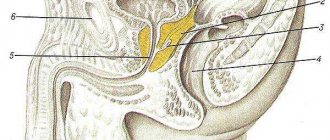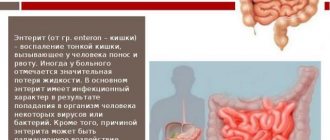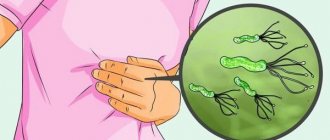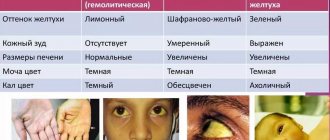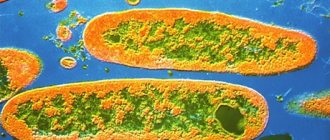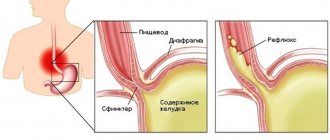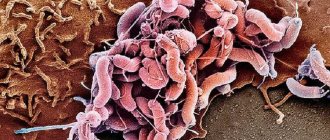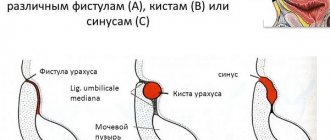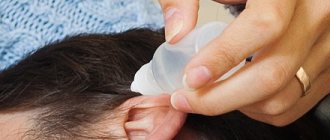How does infection occur and who is at risk?
The routes of infection with polio mainly come down to the penetration of the virus through the digestive tract - if water, food or hands have previously come into contact with contaminated substances. For example, feces of a sick person get into a pond, and then when swimming, the patient gets the virus along with the contaminated water. The causative agent of the disease is poliovirus.
You can become infected through water, food, dirty clothes, etc. At risk are:
- children under 7 years old. Poliomyelitis occurs much more often in children than in adults;
- Pregnant women;
- people with very weakened immune systems. This can be facilitated by various diseases, as well as disorders at the endocrine level, periods after operations, etc.;
- people suffering from immunodeficiencies.
The risk of infection is higher during the warm season: summer or autumn. The virus is very tenacious; in a humid environment it can live up to 4 months.
Diagnostics
Virus carriage, abortive form and non-paralytic polio are very difficult to suspect, and it is possible to prove that it is polio only using laboratory research methods. The paralytic form is easier to diagnose due to typical symptoms (development of paralysis after fever and signs of infection of the upper respiratory tract or intestines), but this occurs in the 2nd week of the disease. To accurately confirm the diagnosis, laboratory research methods are also necessary.
Thus, in all cases suspected of polio, swabs from the patient’s nasopharynx and stool are taken (take into account that the virus is contained in the nasopharynx for the first week of the disease, and in stool for up to 7 weeks). These materials are searched for the polio virus. In addition, serological methods are used: the concentration (titer) of antibodies to polio is determined in the patient’s blood at the time of admission to the hospital and after 2-4 weeks. This method is called the paired serum method. An increase in antibody titer of at least 4 times confirms the diagnosis of polio.
Symptoms of polio and course of the disease
The polio virus causes the following symptoms:
- signs of intoxication: nausea, vomiting, diarrhea, rash;
- cold-like disorders: cough, runny nose, sore throat, difficulty breathing and swallowing;
- fluctuations in blood pressure, fatigue, general poor health, headache;
- in rare cases - various types of paralysis that can lead to the death of the patient.
It is important to note that in 90% of cases, polio has no symptoms and does not affect the nervous system. And in 10% of cases there are very severe forms, involving inflammation of the membranes of the brain - with serious consequences, even fatal.
The incubation period of polio is quite short - it does not exceed 5 days. In this case, recovery in the case of a mild form occurs within 3 days. However, as we have already said, there are also complex forms - they are quite rare, but extremely dangerous. In this case, treatment may last for months, years, or may be completely useless.
Symptoms
From the moment the virus enters the body until the disease develops, it can take from 2 to 35 days (this is called the incubation period). After this, further development of the situation is possible in the form of:
- virus carriage (inapparent form) – clinical symptoms are completely absent. The virus can only be detected in a laboratory or by detecting antibodies in the blood. At the same time, a person is contagious, releases the virus into the environment and can become a source of disease for other people;
- minor (abortive, visceral) form of the disease;
- damage to the nervous system.
Abortive form of polio
According to statistics, this form of the disease develops in almost 80% of all cases of polio. It is almost impossible to guess from clinical signs that it is polio. The disease begins acutely with an increase in temperature to 38-39°C, headache, general malaise, and sweating. Against the background of weakness and lethargy, there may be catarrhal symptoms: a slight runny nose, redness of the eyes, redness of the mucous membrane of the pharynx, discomfort in the throat, coughing. This situation is in most cases perceived as an acute respiratory viral disease.
Instead of catarrhal symptoms from the upper respiratory tract, intestinal symptoms may appear: nausea, vomiting, abdominal pain, loose stools. These symptoms resemble a common intestinal infection or are regarded as food poisoning.
After 5-7 days, the body copes with the disease and recovers. In this case, the diagnosis of polio can also be confirmed only with the help of additional research methods (search for the pathogen in the nasopharynx, feces, or determination of antibodies in the blood).
CM. SEE ALSO: Vaccination against polio
In the case of an abortive form of the disease, a person is also a source of infection for others (even after recovery, continuing to excrete the virus in feces).
Damage to the nervous system
This variant of the development of the disease is much less common than the abortive form. Damage to the nervous system can be non-paralytic and paralytic.
Nonparalytic poliomyelitis is a serous form of meningitis. As the temperature rises to 39-40°C, severe headache, vomiting that does not bring relief, photophobia, pain in the back and limbs appear. On the 2-3 day of illness, meningeal symptoms appear: Brudzinsky, Kernig, stiff neck, etc. (although they may be slightly expressed). Patients are lethargic, drowsy. Since meningitis is suspected in the presence of such symptoms, the patient undergoes a spinal puncture. The cerebrospinal fluid (CSF) is clear, with normal or slightly increased pressure. The number of blood cellular elements is increased to 1000 (if the puncture is carried out in the first days of the disease, then these are predominantly neutrophils, and then lymphocytes are detected), the protein increases to 1 g/l. There are no polio-specific signs during routine examination. Confirming the diagnosis of polio is possible only if the virus is detected in nasopharyngeal swabs or in stool, or if antibodies are detected. Non-paralytic poliomyelitis has a favorable course without consequences. After 2-3 weeks from the onset of the disease, all symptoms disappear, and a little later the composition of the cerebrospinal fluid normalizes.
Paralytic polio is the most dangerous form of the disease, due to which a person can remain disabled for life. Develops in 2-3% of polio cases. It can be divided into several time periods:
- preparalytic stage - begins with a rise in temperature to 39°C, the appearance of headache, vomiting, catarrhal symptoms or signs of intestinal infection. Against this background, meningeal symptoms, muscle pain, pain along the nerve trunks (when pressed) appear. The duration of this stage is about a week (4-7 days). During this time, the temperature may decrease slightly or even normalize, and then rise again (a wave-like rise in temperature). If a spinal puncture is performed during this period, then an increase in the number of neutrophils to 100-500, normal or slightly increased protein content are detected in the cerebrospinal fluid;
- paralytic stage - occurs when the temperature drops for the second time, when the condition seems to have improved somewhat. Often patients wake up in the morning with sudden weakness in the muscles, up to a complete absence of even movement. This stage coincides in time with the penetration of the virus into the nerve cells of the gray matter of the brain and spinal cord. Paralysis develops within one to a maximum of several days. Reflexes decrease or disappear completely, muscle tone decreases, and when feeling the muscles, pain occurs (sometimes so severe that it is impossible to examine the affected area). After a few days, the atrophic process begins in the muscle tissue - gradually the muscles begin to decrease in volume, as if they “shrink out”. Depending on which parts of the brain are affected by the virus, such muscle masses will become immobilized. Any muscle can be affected, but most often it is the muscles of the lower extremities. If the abdominal muscles and diaphragm are involved in the process, this leads to disruption of the act of breathing. When neurons in the brain stem are damaged, weakness develops in the facial muscles, the corner of the mouth droops, the eyes do not close, food spills out of the mouth, and the face looks distorted. If the cells of the vagus nerve nuclei are affected, salivation develops, the amount of mucus in the bronchi increases (it blocks the lumen of the bronchi), speech and swallowing are impaired (food can enter the respiratory tract), and the central regulation of breathing is disrupted. This can all be so severe that the patient will require artificial ventilation. In parallel, disturbances in the activity of the cardiovascular system develop (also due to damage to the vagus nerve nuclei). Respiratory and cardiac problems can cause death. A characteristic sign of polio is the development of only motor disorders; the sensitive area is not affected. The cerebrospinal fluid in the paralytic stage contains an increased amount of protein, and the number of cells decreases to 10 in 1 μl. The duration of the period of paralysis formation ranges from several days to two weeks;
- recovery stage: begins immediately as soon as the severity of paralysis ceases to increase. This stage is quite long. The most active recovery occurs in the first 3 months, then the pace slows down, but recovery still continues. The maximum period is 3 years (after this period, no improvements can be expected). Muscle pain disappears, reflexes and small movements appear. Gradually, the range of motion and muscle strength increases. If the virus has damaged a large number of neurons, the paralysis may not recover;
- residual stage – the stage of residual phenomena. It is characterized by the presence of atrophic changes in the muscles, the formation of contractures (limited mobility in the joints), dislocations, and deformities of the joints and spine. If a child has suffered polio, then the affected limbs lag behind in development and bones grow poorly. It is these residual effects that become the cause of disability after polio.
CM. SEE ALSO: Vaccination against polio
How the disease is treated in Moscow
Treatment of polio is carried out in an infectious diseases hospital and involves an integrated approach, including:
- strict bed rest. The patient should remain calm, in a favorable environment;
- protection of paralyzed muscles. For this purpose, special splints can be applied;
- physiotherapy. This includes physical therapy, swimming in the pool under the supervision of a trainer, and massage. This also includes electrical stimulation, paraffin applications, UHF therapy and much more. The procedures are aimed at stabilizing the nervous system, helping paralyzed muscles;
- Ventilation Clinical guidelines for polio also suggest major life-sustaining interventions. The use of a mechanical ventilation device is indicated for patients whose paralysis has affected the respiratory system, and therefore threatens respiratory arrest;
- use of special medications.
It is very important that a polio patient be closely monitored, especially when the disease is progressing or not showing significant improvement.
Treatment of polio at home
professional treatment for polio at home. A confirmed diagnosis is an indication for hospitalization. If polio is suspected, it is necessary to immediately create complete rest for the patient, since physical activity in the preparalytic stage of the disease is fraught with the risk of developing severe paralysis. The patient is placed on a hard horizontal surface, his limbs are fixed, and an ambulance is called.
For at least 40 days, the patient will be in a specialized medical institution, where he is provided with competent care and maximum monitoring of his condition. This is also where the recovery period takes place.
A late recovery period is possible at home, but treatment usually remains outpatient, with the patient visiting a medical facility, for example for physical therapy.
Self-medication is not acceptable, it is not effective enough and is dangerous not only by the development of complications, but also by the death of the disease.
Prevention of polio
The main preventive measure is vaccination of children, which is carried out at an early age and then again. There is a special vaccination calendar, on the basis of which pediatricians recommend undergoing this procedure. When vaccinated correctly, lifelong immunity and resistance to poliovirus are developed.
If we talk about the prevention of polio at the household level, it means:
- refusal to swim in dirty bodies of water that are not suitable for this;
- compliance with personal hygiene rules;
- refusal of potentially dangerous products. In this sense, raw milk is undesirable - a pathogen is often found in it;
- Quarantine measures if a child with a disease is detected in a children's group. At the same time, all objects and things are processed and disinfected.
Now polio is quite rare - this is due to centralized vaccination, thanks to which children from an early age develop immunity to the polio virus, and therefore calmly tolerate contact with it.
Recovery prognosis
The non-paralytic form of the disease usually does not cause serious complications and goes away fairly quickly with timely treatment..
The paralytic form is more dangerous. Complications from the paralytic form of polio can threaten the patient’s normal life and even lead to death.
If the patient has become disabled, he is assigned a long rehabilitation period, after which in most cases some basic functions of the body are restored.
Video: “Can polio be cured?”
Questions and answers on the topic of polio
Is it necessary to get the OPV vaccine?
Parents have the opportunity to refuse such vaccination - they can write a written refusal and not undergo this procedure. However, doctors warn against such a decision: remember that if 10% of children get sick, the consequences will be irreversible, and for some children such a refusal will cost their lives. Currently, OPV vaccination is the only way to be 100% protected against the polio pathogen.
How is the polio vaccine given?
The vaccination is done twice, starting from the age of three months. The injection is given intramuscularly and contains the virus killed by formaldehyde.
How effective is vaccination against this disease?
Since the active fight against polio (1988), thanks to vaccination, it has been possible to reduce the number of cases from 350 thousand people per year to 359 cases (in 2014). These data speak for themselves: after receiving the vaccine, the disease becomes harmless and no longer threatens the person.
Treatment of polio with traditional methods
Treatment of polio with folk remedies is not capable of providing a sufficient therapeutic effect, but can be used in the final stages of treatment if the attending physician has no objections. These are usually general strengthening drugs, the prescription of which should definitely be discussed with your doctor, for example:
- celandine - 1 tbsp. dry herbs are brewed with 300 ml of boiling water, left for 1 hour under the lid, filtered; Take warm, 1 des.l. 3 times a day;
- rose hips - ½ tbsp. Place dried berries in a thermos and pour a liter of boiling water, leave overnight; take ½ cup warm 3 times a day;
- aloe - extract injections (sold in pharmaceutical chains), 1 ml is injected subcutaneously daily, after each injection rest is required for 20 minutes; course of treatment 30 injections.
Poliomyelitis virus, structure of the virus, how it spreads, what causes death
The causative agent of polio is the Poliovirus hominis virus. Isolated from the body of an infected carrier at the beginning of the twentieth century. Belongs to the intestinal group of enteroviruses (varieties of ECHO viruses and Coxsackie viruses).
Conventionally divided into three types - the first parasitic type has become particularly widespread among people. It is a spherical molecule of a simple structure, about 30 nm in size, containing single-stranded RNA, which has positive polarity and consists of more than 7 thousand nucleides. The type I virion is particularly pathogenic for humans; it is also the causative agent of known epidemics (85% of the paralytic form of the disease). Poliovirus type II is less common. And the causative agent of type III polio most often causes a latent outcome of the disease (carriage).
Treatment of other diseases starting with the letter - p
| Treatment of pancreatitis |
| Treatment of pancreatic necrosis |
| Treatment of tracheal papilloma |
| Treatment of parametritis |
| Treatment of paraneoplasia |
| Treatment of paranephritis |
| Treatment of pediculosis |
| Treatment of pelvioperitonitis |
| Treatment of testicular torsion |
| Treatment of a patellar fracture |
| Treatment of periarthritis of the shoulder joint |
| Treatment of pericarditis |
| Treatment of hepatic coma |
| Treatment of hepatic encephalopathy |
| Treatment of pyelonephritis |
| Treatment of pyoderma |
| Treatment of pyonephrosis |
| Treatment of pleurisy |
| Treatment of pneumoconiosis |
| Treatment of pneumonia |
| Treatment of pneumosclerosis |
| Treatment of pneumothorax |
| Treatment of gouty kidney |
| Treatment of gout |
| Treatment of subcutaneous granuloma of the face |
| Treatment of polycystic kidney disease |
| Treatment of polyneuropathies |
| Treatment of gallbladder polyps |
| Treatment of diarrhea |
| Treatment of portal hypertension |
| Treatment of porphyrias |
| Treatment of Post-Traumatic Stress Disorder |
| Treatment of priapism |
| Treatment of leprosy |
| Treatment of prostatitis |
| Cold treatment |
| Treatment of proteinuria |
| Treatment of pseudotuberculosis |
| Treatment of psychosomatic diseases |
| Treatment of psoriasis |
| Treatment of hydatidiform mole |
| Treatment of pemphigus |
The information is for educational purposes only. Do not self-medicate; For all questions regarding the definition of the disease and methods of its treatment, consult your doctor. EUROLAB is not responsible for the consequences caused by the use of information posted on the portal.
How do you feel about mandatory vaccination?
- Positively, it prevents many diseases. 61%, 2321 votes
2321 votes 61%2321 votes - 61% of all votes
- Negatively, these are all government schemes to make it easier to manage us. 25%, 964 votes
964 votes 25%
964 votes - 25% of all votes
- Neutral, I don’t think it has any effect on my health. 13%, 500 votes
500 votes 13%
500 votes - 13% of all votes
Total votes: 3785
Voted: 3764
January 17, 2018
×
You or from your IP have already voted.
Pontine form
In potninous poliomyelitis, the nucleus of the facial nerve is severely affected. There is asymmetry of the face, a lag in the corner of the mouth, facial expressions are greatly distorted, the eyelids do not close completely, and the nasolabial fold is smooth. This form of polio differs from others in that children do not experience lacrimation and hyperacusis, and taste sensitivity does not disappear.
Recommendations
A consultation with a neurologist, electromyography, and blood tests are recommended.
| • | Leading specialists and institutions for the treatment of this disease in Russia: |
| Doctor of Medical Sciences, Head of the Department of Russian State Medical University, Professor, Academician of the Russian Academy of Medical Sciences Gusev E.I. | |
| • | Leading specialists and institutions for the treatment of this disease in the world: |
| G. AVANZINI, Italy. |
